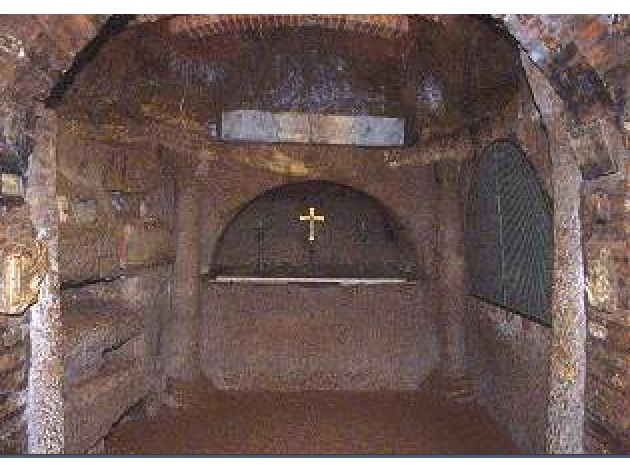
La naissance et l'expansion successive de ce cimetière souterrain sont liées au martyre de la jeune Agnès, enterrée ici, et remontent au début du IIIe siècle après Jésus-Christ. La sainte fut peut-être victime de la persécution de Dèce en 250 après J.-C. ou de Valérien en 257 après J.-C., ou encore de la persécution plus tardive de Dioclétien en 304 après J.-C. Attesté dans les plus anciens documents concernant les martyrs romains, son culte fut l'un des plus répandus à Rome dans les premiers siècles de l'ère chrétienne.
Le corps de la martyre a été enterré dans une galerie au premier étage d'un cimetière chrétien préexistant, divisé en plusieurs régions et aménagé sur trois niveaux, creusé sur le flanc d'une colline le long de la Via Nomentana. La région comptait également de nombreuses sépultures païennes, de dimensions aussi modestes que monumentales, datant aux Iᵉʳ et IIᵉ siècles après J.-C. La nécropole païenne fut détruite lorsque l'empereur Constantin fit construire dans cette zone une grande basilique – dont il ne reste aujourd'hui que quelques structures – à laquelle fut annexé le Mausolée de sainte Constance, l'un des monuments les plus importants de l'architecture de l'Antiquité tardive.
Sur le lieu même de la sépulture d'Agnès, une petite église fut édifiée au Vᵉ siècle, puis entièrement reconstruite au VIIe siècle par le pape Honorius, qui la transforma en l'actuelle basilique semi-enterrée : son autel abrite la tombe de la martyre, tandis qu'une merveilleuse mosaïque montrant Agnès entre les papes Honorius et Symmaque sur un fond doré orne son abside. Sur les murs de l'escalier monumental menant à l'église se trouvent deux des plus anciens témoignages du culte de la sainte, datant du IVe siècle : une plaque de marbre avec la représentation de la martyre et une inscription du pape Damase, découverte en 1728.
Bien que dépourvues de décorations picturales, les catacombes ont permis de découvrir un grand nombre d'inscriptions, de graffitis et d'objets funéraires, comme un monogramme constantinien décoré d'émaux ou l'épitaphe de l'ancienne élève Sabina, qui souhaita être inhumée au-dessus de la tombe de son parent adoptif.
Informations
For visiting schedules and procedures, see the official website
 Condividi
Condividi
Location
Pour connaître tous les services d'accessibilité, visitez la section Rome accessible.











































